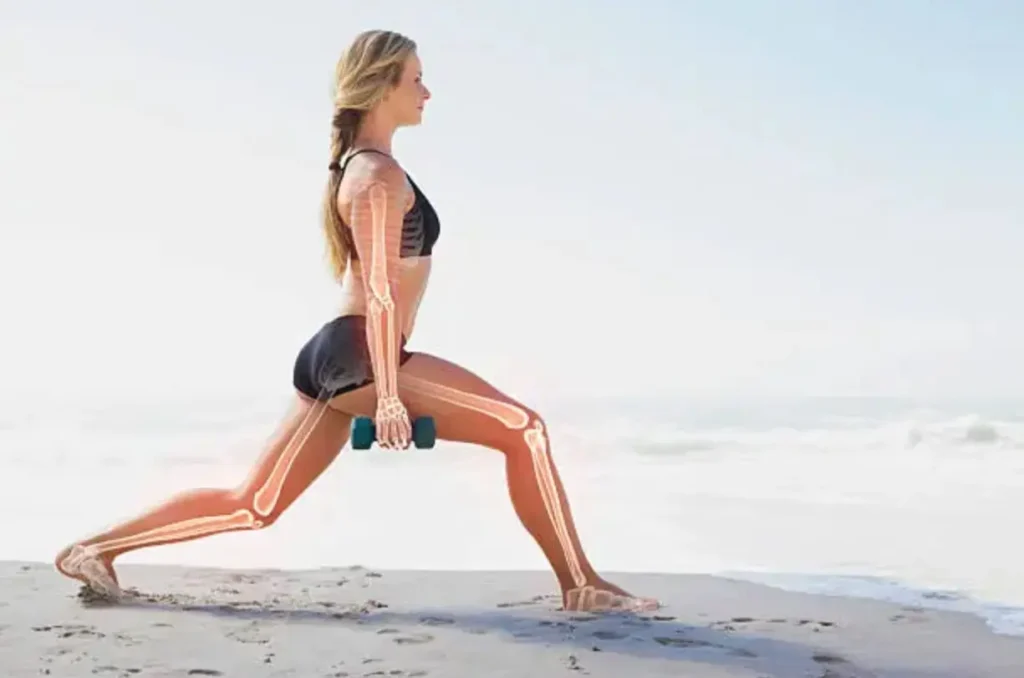
If you’ve ever observed an apartment or office building being constructed, you might have noticed the metal scaffolding that supports the structure. Similarly, within your body, bones serve as the framework that keeps you standing upright.
As you age, these supporting frames can become weak. If they weaken too much, you might end up with a fracture. Your internal framework was built when you were young, with calcium and other minerals fortifying your bones—(assuming you consumed them sufficient enough in your diet).
As you get older, these minerals can begin to leach out of your bones, making them brittle, fragile, and prone to fractures – a condition known as osteoporosis.
WHO has identified osteoporosis as second only to cardiovascular disease as a leading health care problem in elderly. Osteoporosis is a condition where your bones become weak and brittle, making them more likely to easily break, even from a minor fall or bump. It’s like your bones lose some of their strength and density over time, especially as you get older. According to the World Health Organization (WHO), 30% of postmenopausal women suffer from osteoporosis. It has been reported that around six crore people in India have osteoporosis and 80% of them are women. The peak incidence of osteoporosis in India occurs 10 – 20 years earlier than in western countries.
Most fractures in older adults result from a combination of weakened bones and a fall. As people age, their bones naturally become weaker. For women, the decrease in estrogen after menopause leads to thinner bones. In their 70s, men also experience bone weakening due to a decline in testosterone.
Fractures resulting from a fall indicate the need for a healthcare professional to assess your walking ability, balance, vision, hearing, and other factors that could contribute to a fall.
While aging is a universal and unavoidable factor that increases the risk of osteoporosis, several preventable factors also contribute to the condition. These include gender, family history, a sedentary lifestyle, emotional stress, poor diet, smoking, and alcohol consumption. Osteoporosis typically shows no symptoms in its early stages, but as the disease progresses and bones weaken, symptoms like back pain, loss of height over time, and a stooped posture may develop. The most severe consequences of osteoporosis—fractures and chronic pain—are common in both men and women, though women are more susceptible.
Ways to prevent:
Ensuring diets rich in protein, calcium and Vitamin D can be the first step to prevent osteoporosis. Include plenty of fresh fruits like bananas, fig; vegetables such as turnips, okra and cabbage, and whole grains in your diet. Dairy products (packed with calcium), fish, and ragi (finger millet) are also good to develop healthy bones. It is logical for old people to take diets with ample calcium that is to take 400 – 500 ml milk or milk products like curd, paneer, cheese etc. regularly. Adequate protein along with calcium also helps in the formation of bone tissues. Do not consume food high in salt content (sodium) as it can make the body lose calcium, further leading to bone loss. Besides the dietary routine, plan an early morning walk and absorb as much Vitamin D as possible from the sun.
Leading a healthy lifestyle is also crucial for optimal bone health, so avoiding smoking, alcohol and caffeine is important. Also, it is sensible to encourage all old people to be as physically active as possible. The more they are on their feet, the less is the risk of fracture of the femur and spine. In a nut shell prevention of osteoporosis can be achieved by adopting a lifestyle that involves regular exercise and avoiding the ‘avoidable’ risk factors.
Regular exercise is beneficial as well. Research suggests that strength training or resistance exercises are the most effective ways for promoting bone health. Weight-bearing exercise is also a key factor in strengthening your bones. Combining weight-bearing activities like walking or playing tennis with strength training and balance exercises can significantly lower your risk of fractures if you fall. To experience these benefits, aim for at least 30 minutes of exercise three times a week. However, it’s essential that exercise does not place sudden or excessive strain on the bones, especially for those with osteoporosis, who should avoid high-impact activities.
Don’t wait until bone loss progresses to the point where a minor fall could cause a disabling fracture. Begin strengthening your bones early with a healthy diet and regular exercise. As you age, consult your doctor about bone density scans, and discuss whether medication is necessary if you’re at risk for or beginning to show signs of osteoporosis. If your bones have weakened, take precautions to prevent falls—wear well-fitting shoes and keep your floors free of clutter to avoid tripping hazards. To keep one’s heels and spirits high, let’s take a pledge to strengthen our bones that keep our feet and lives firm!

Recent Comments